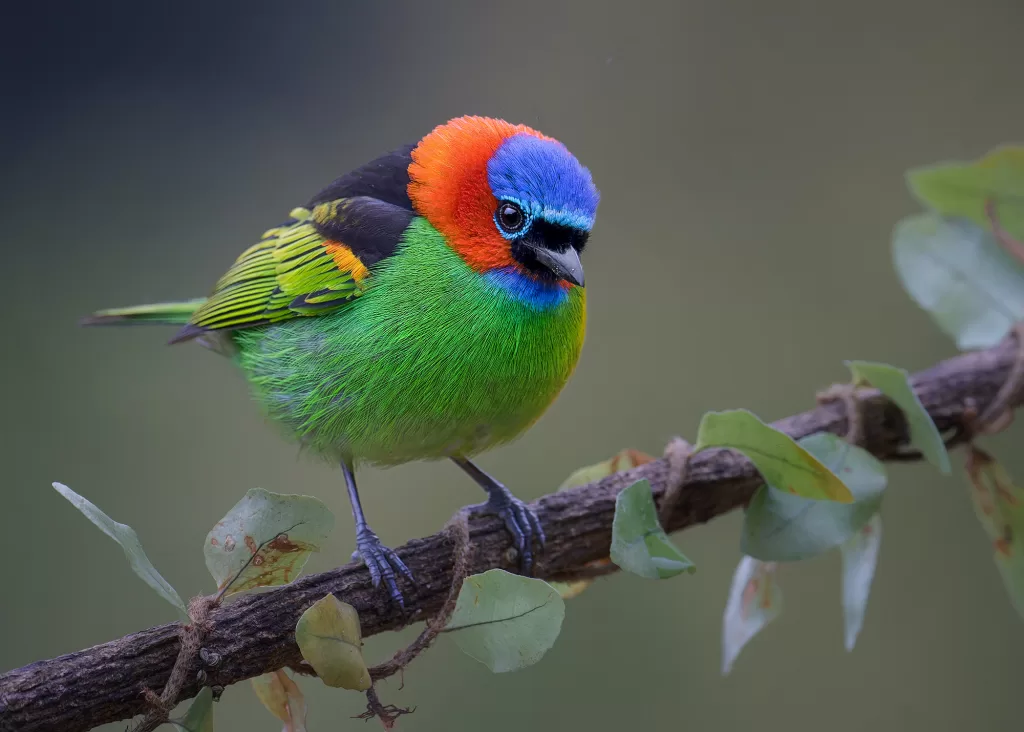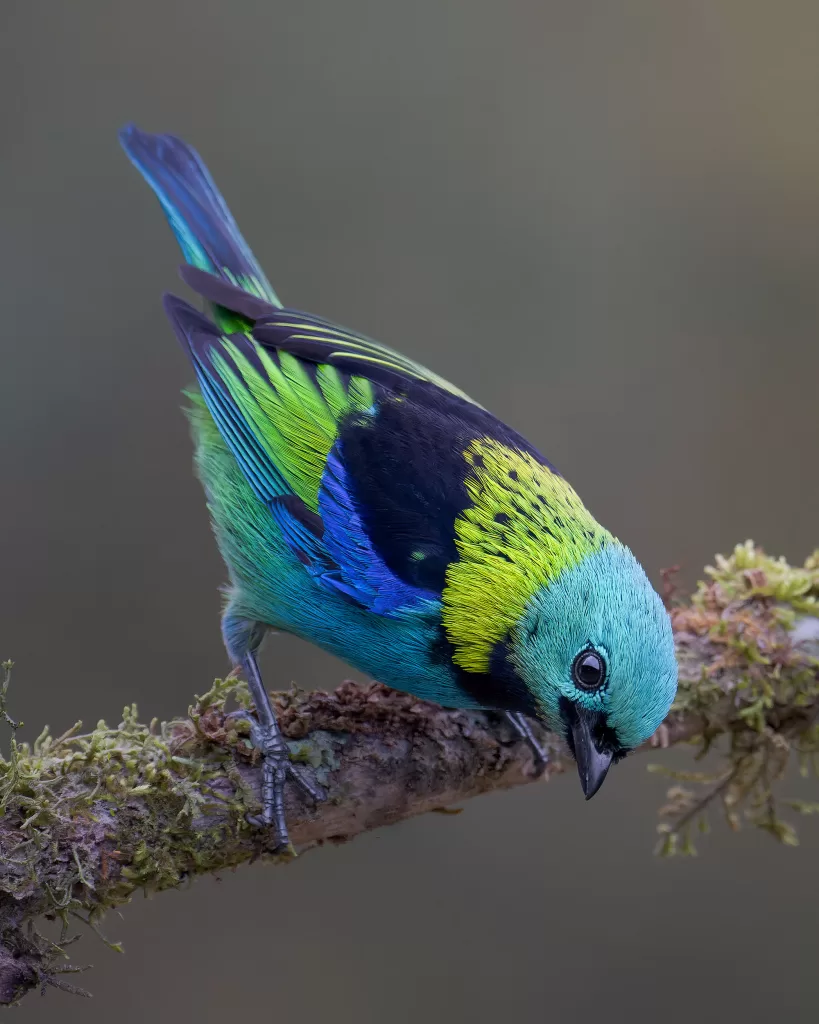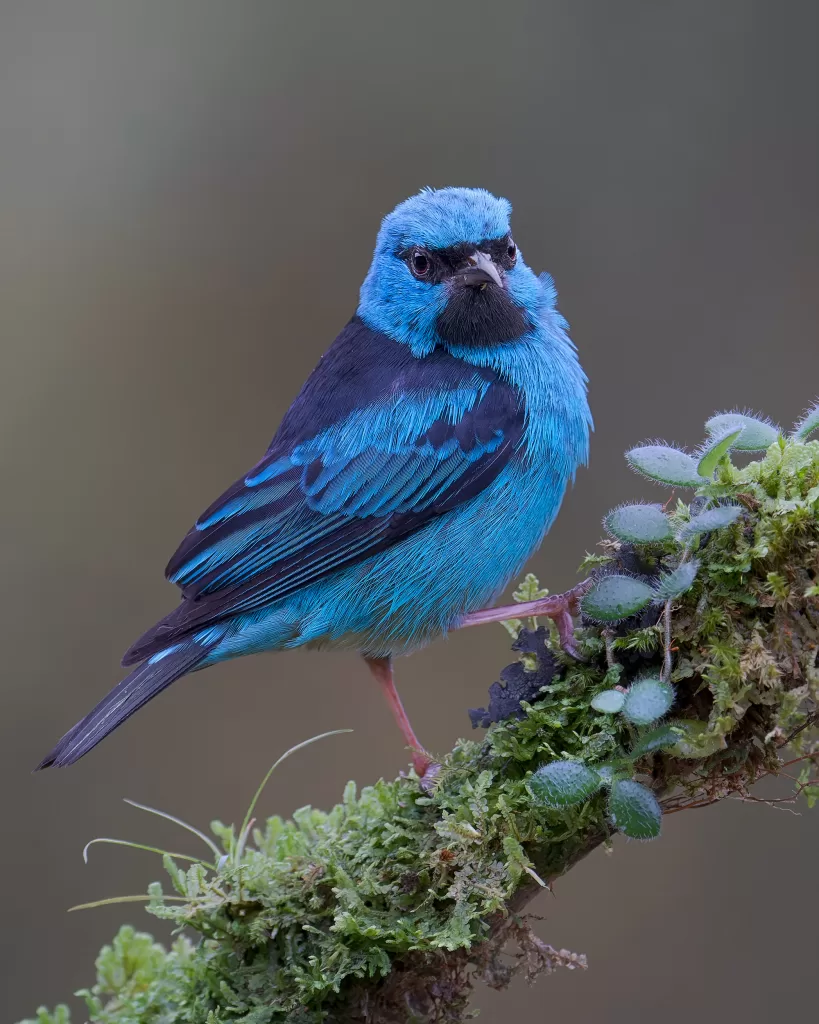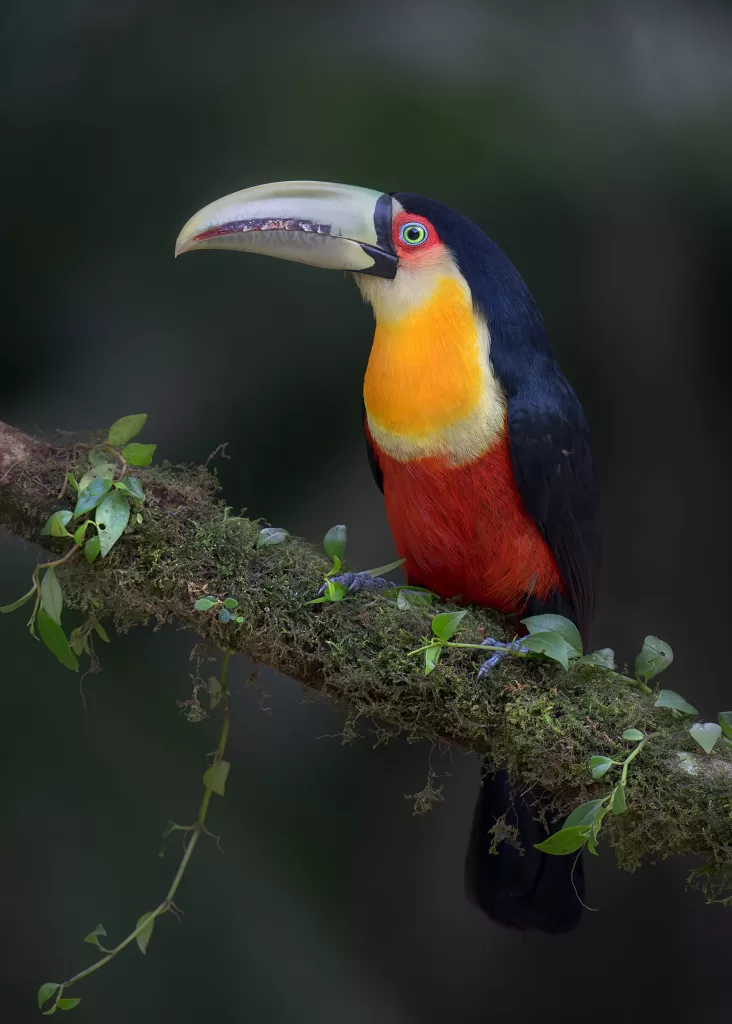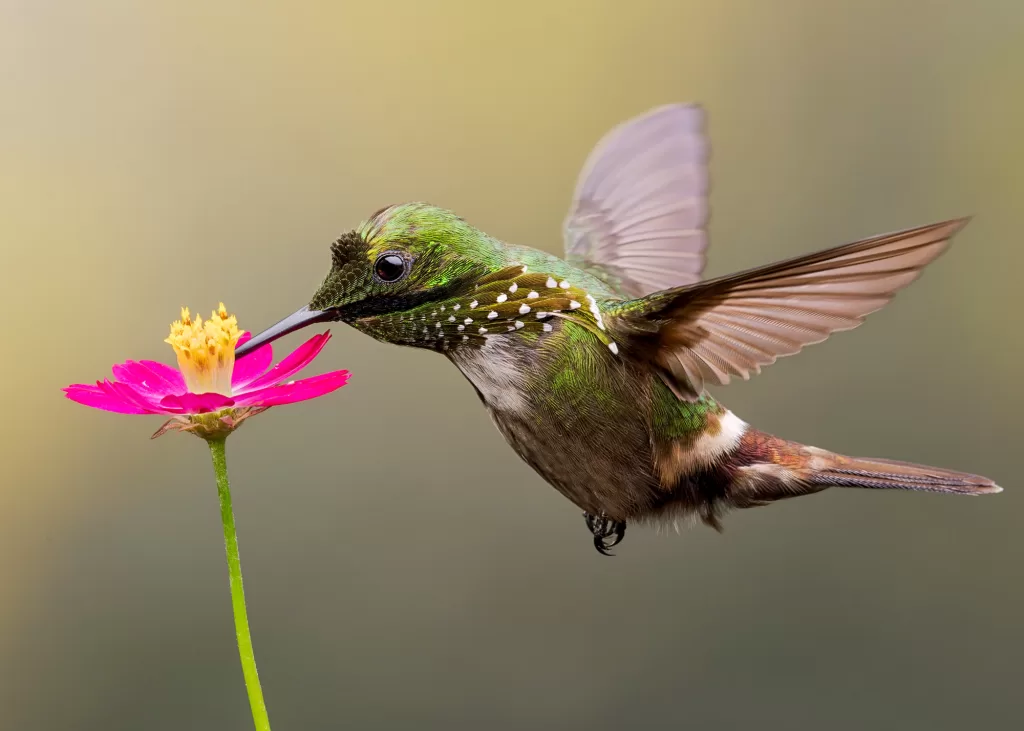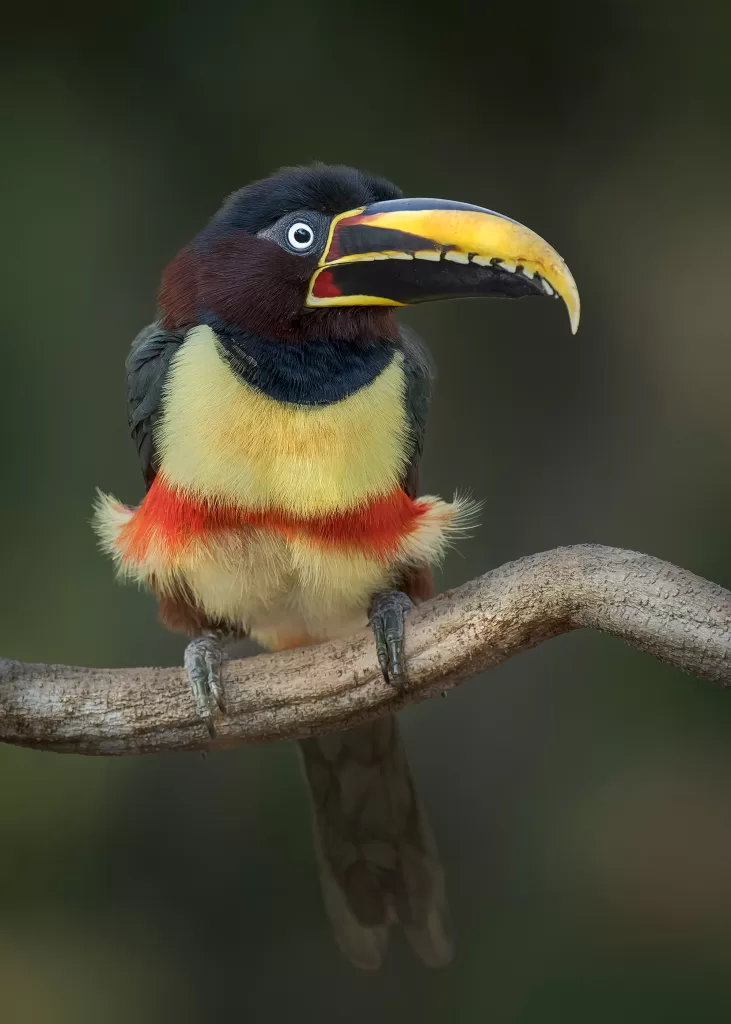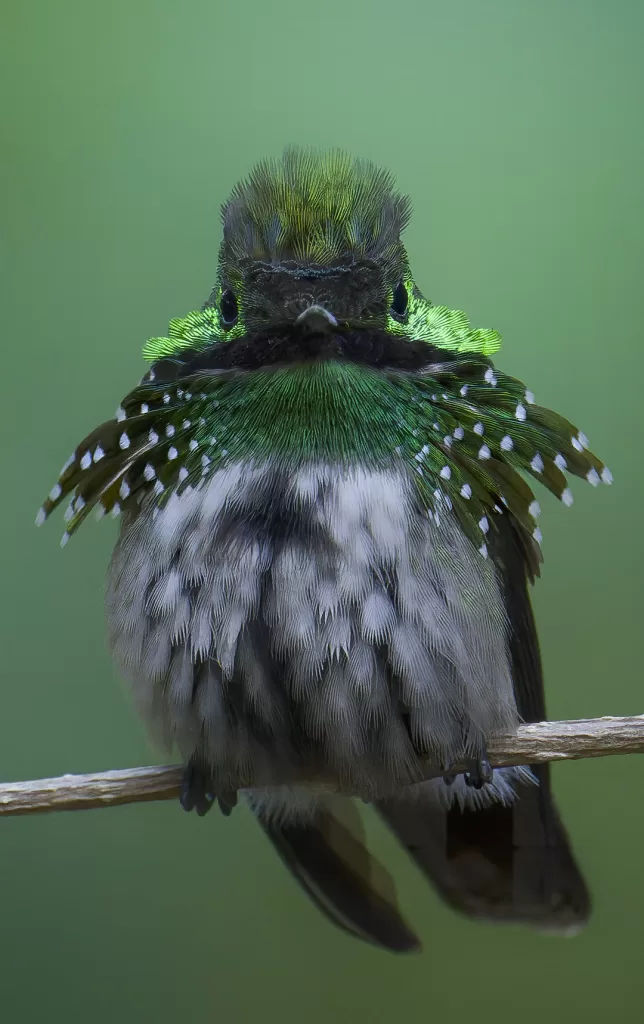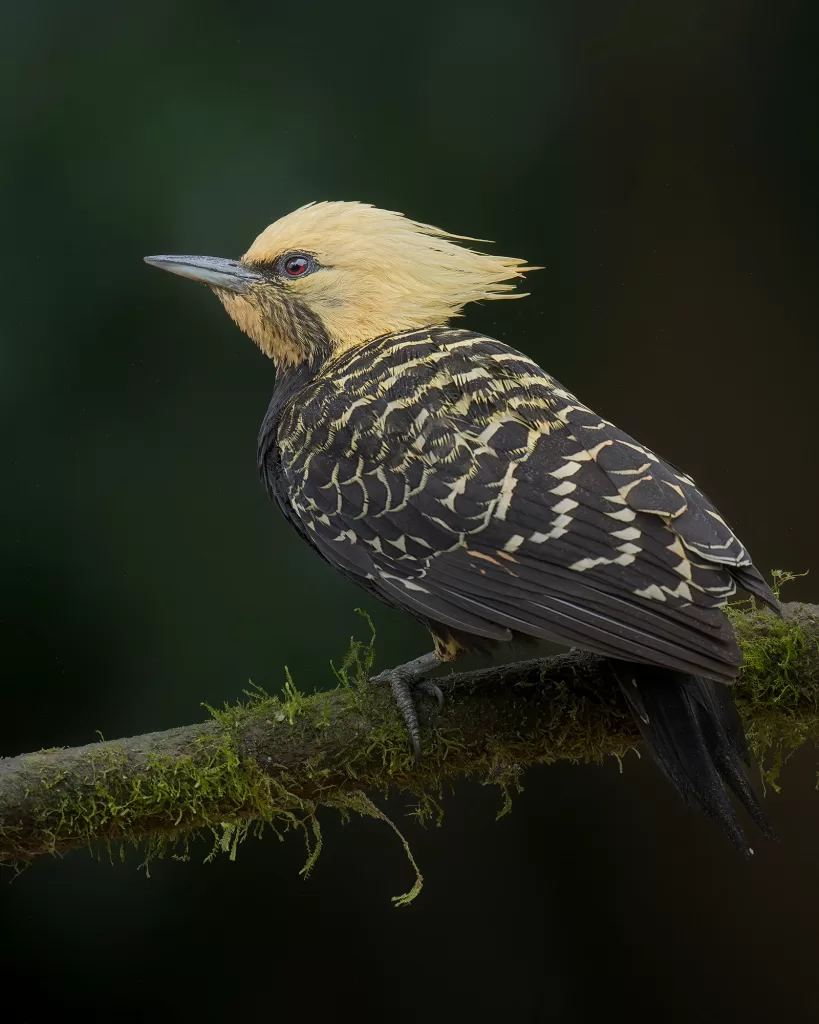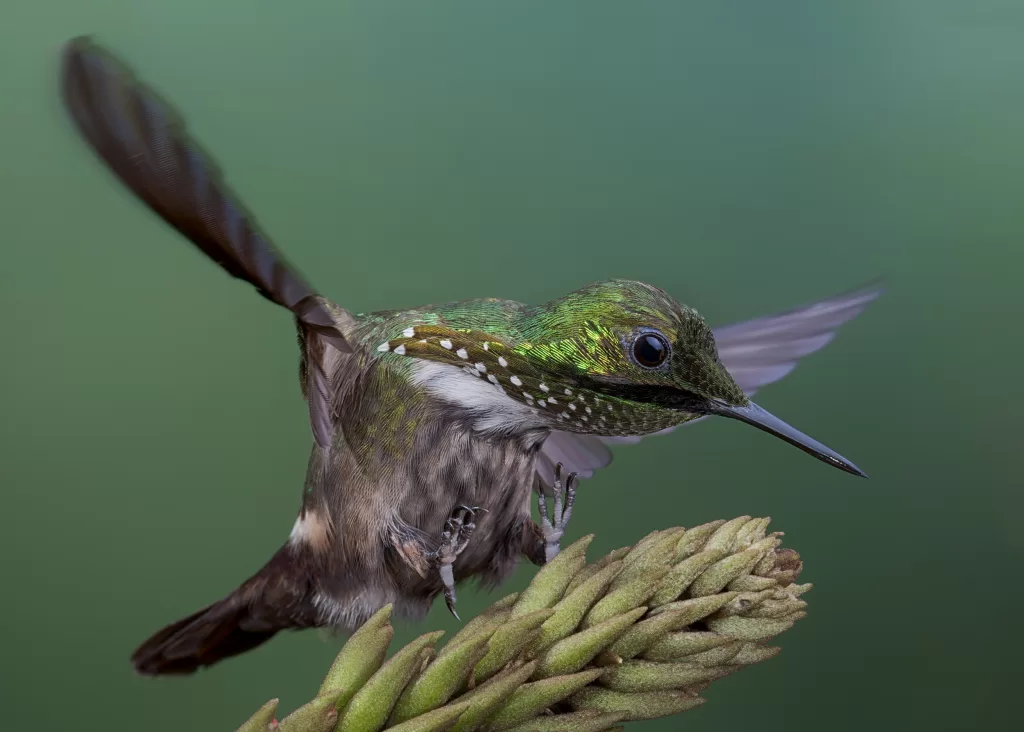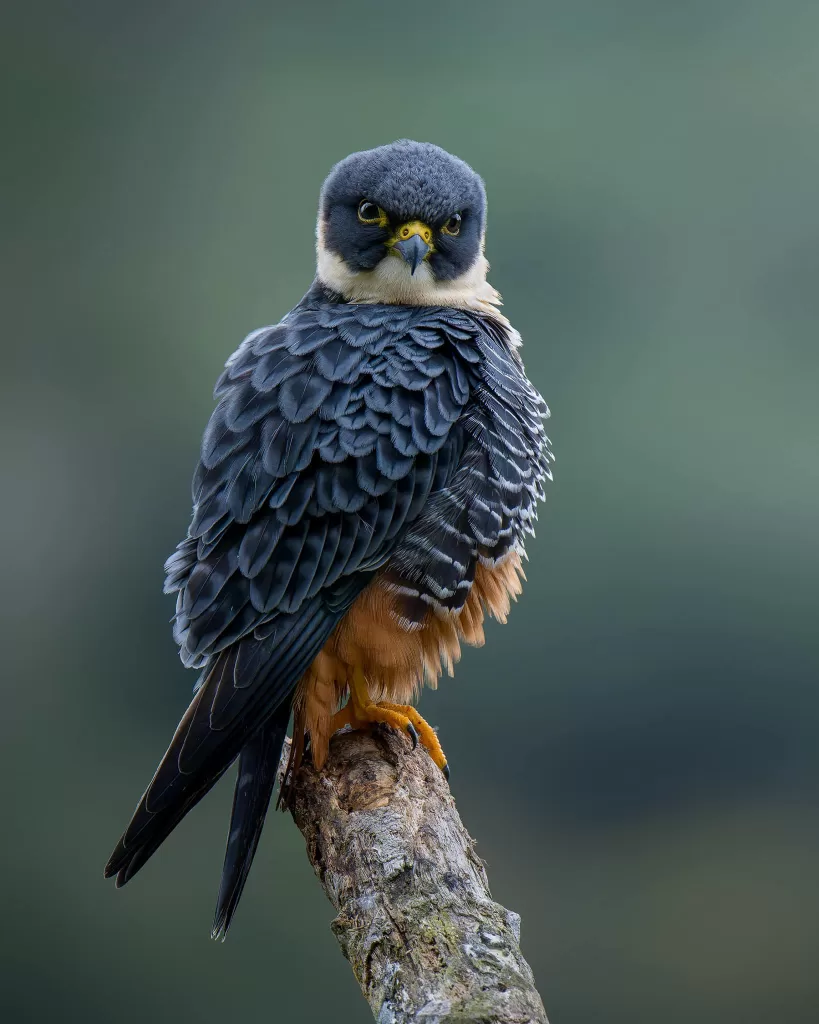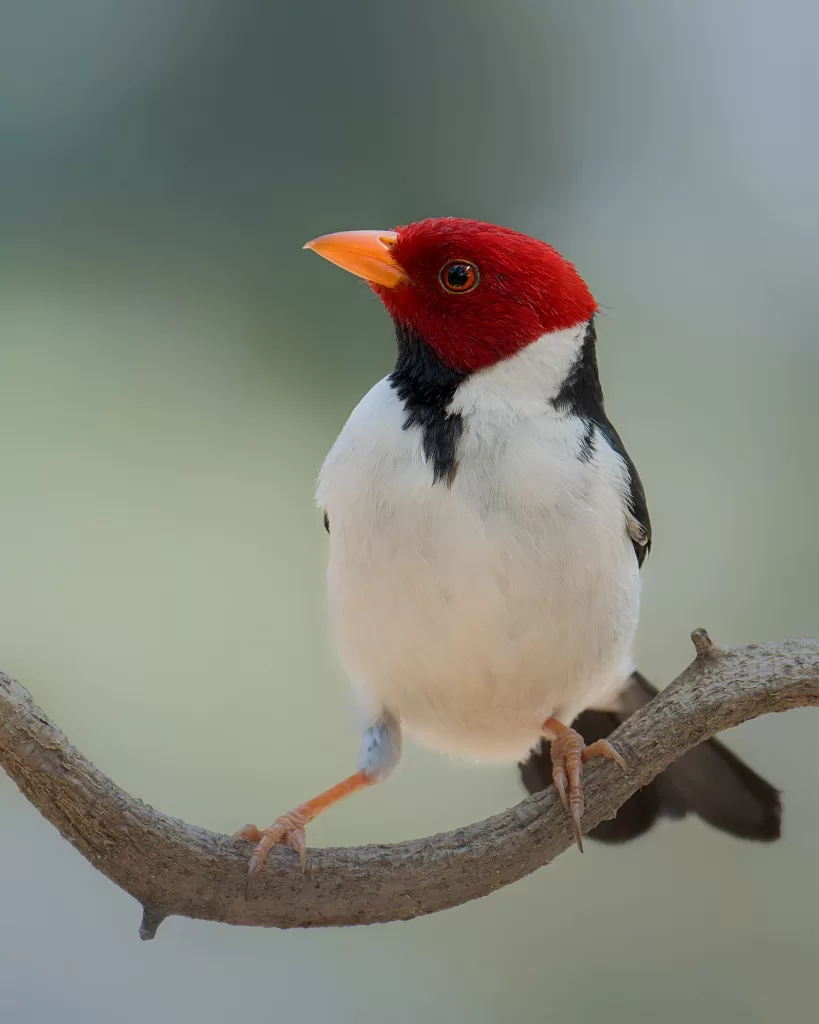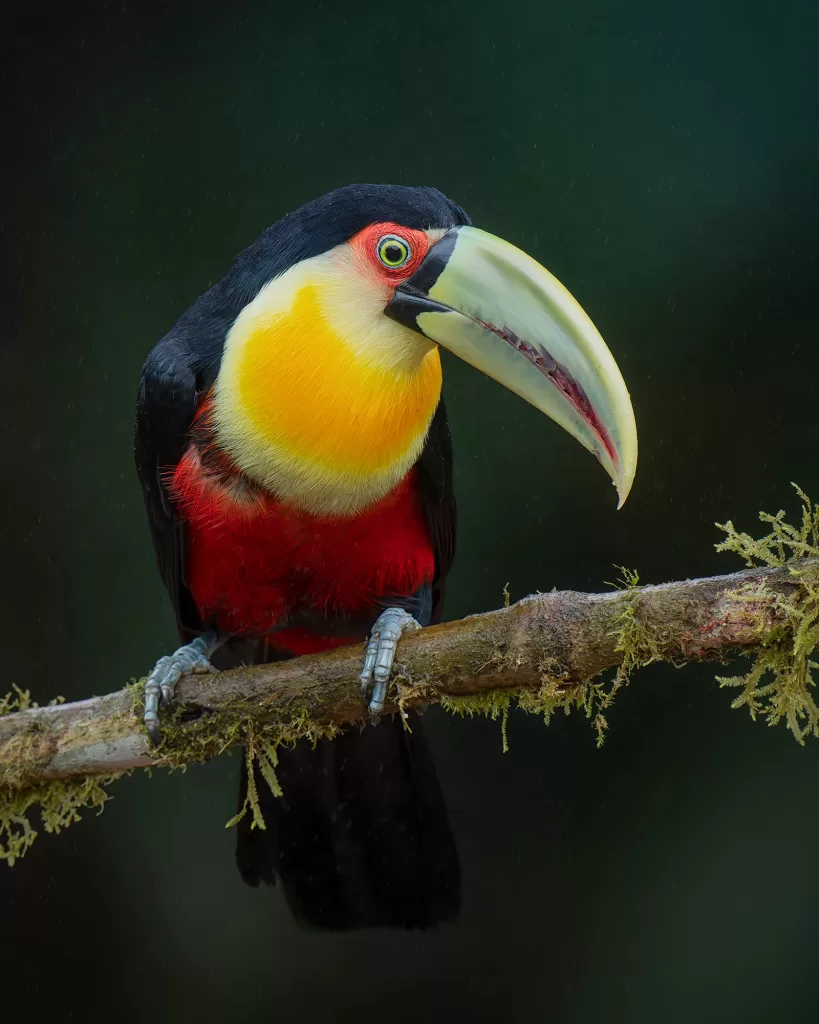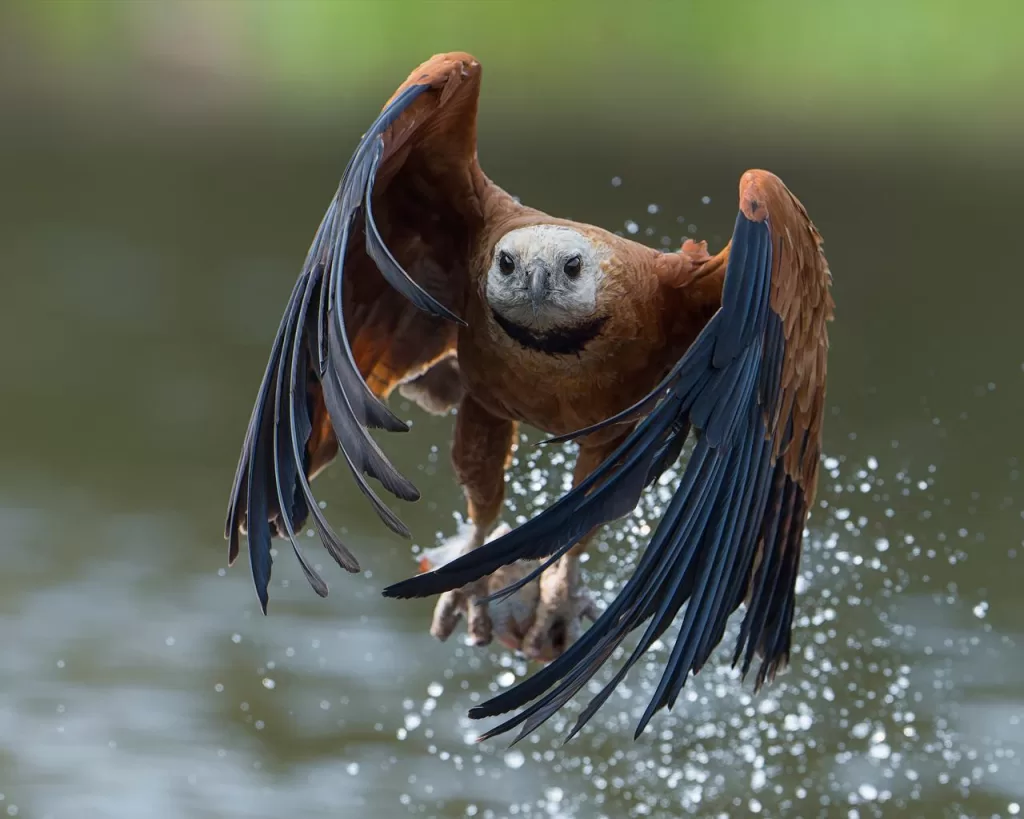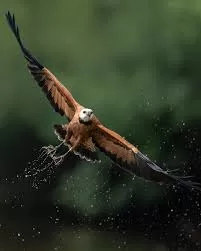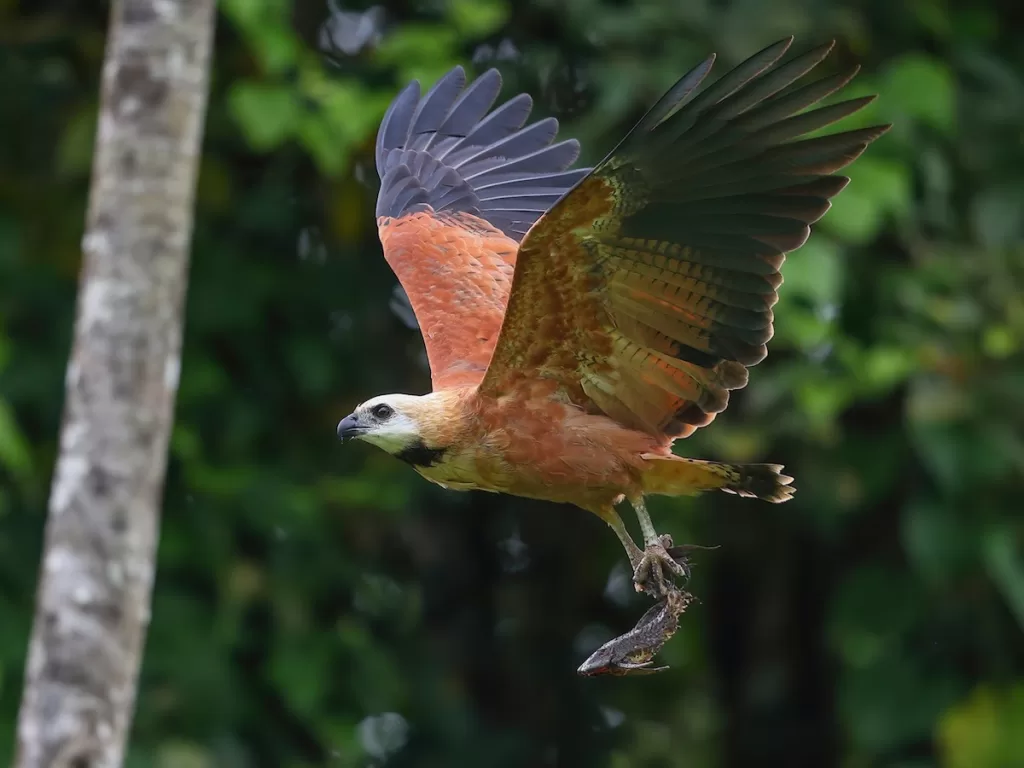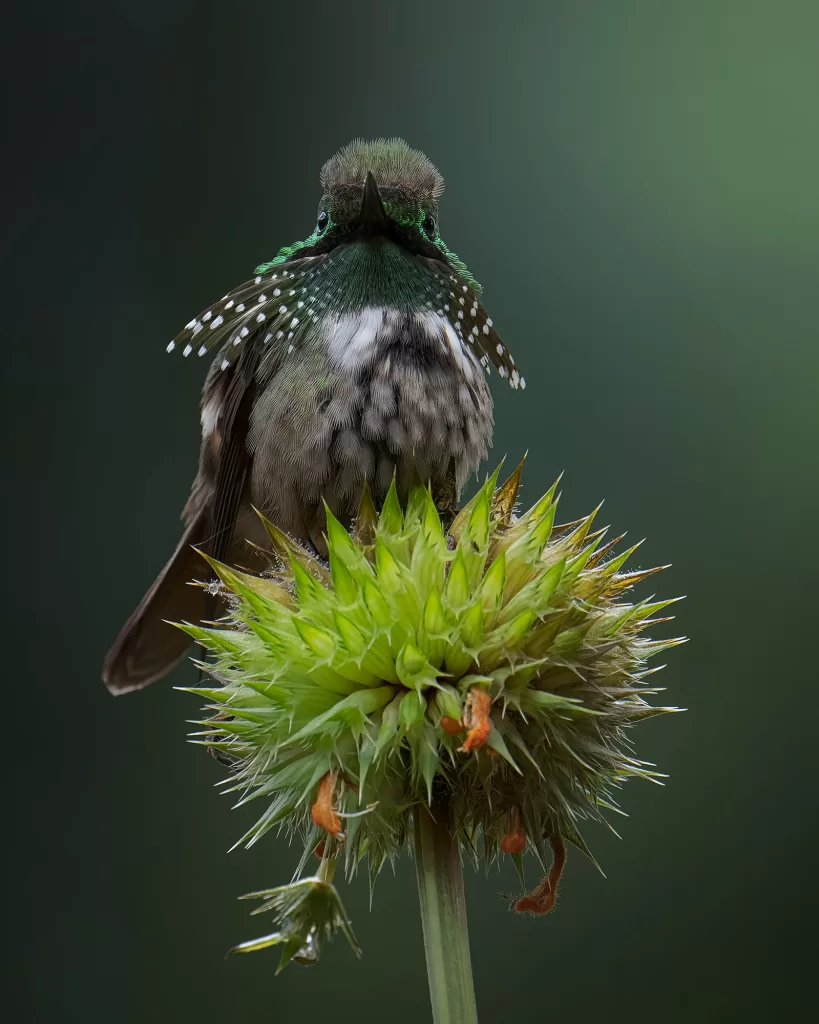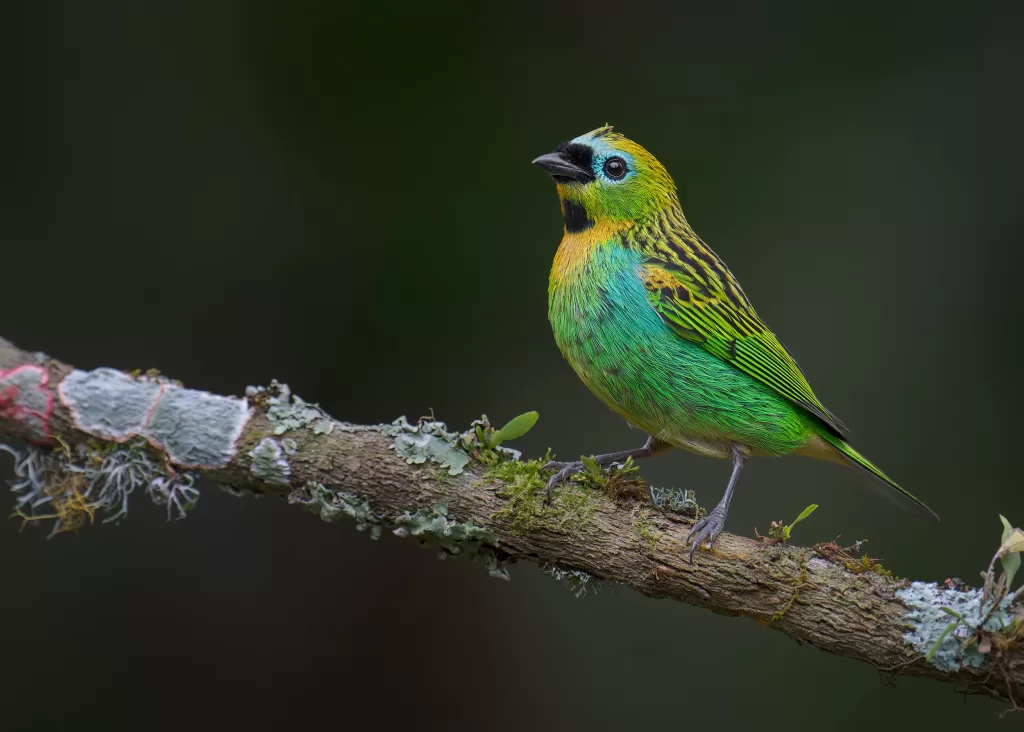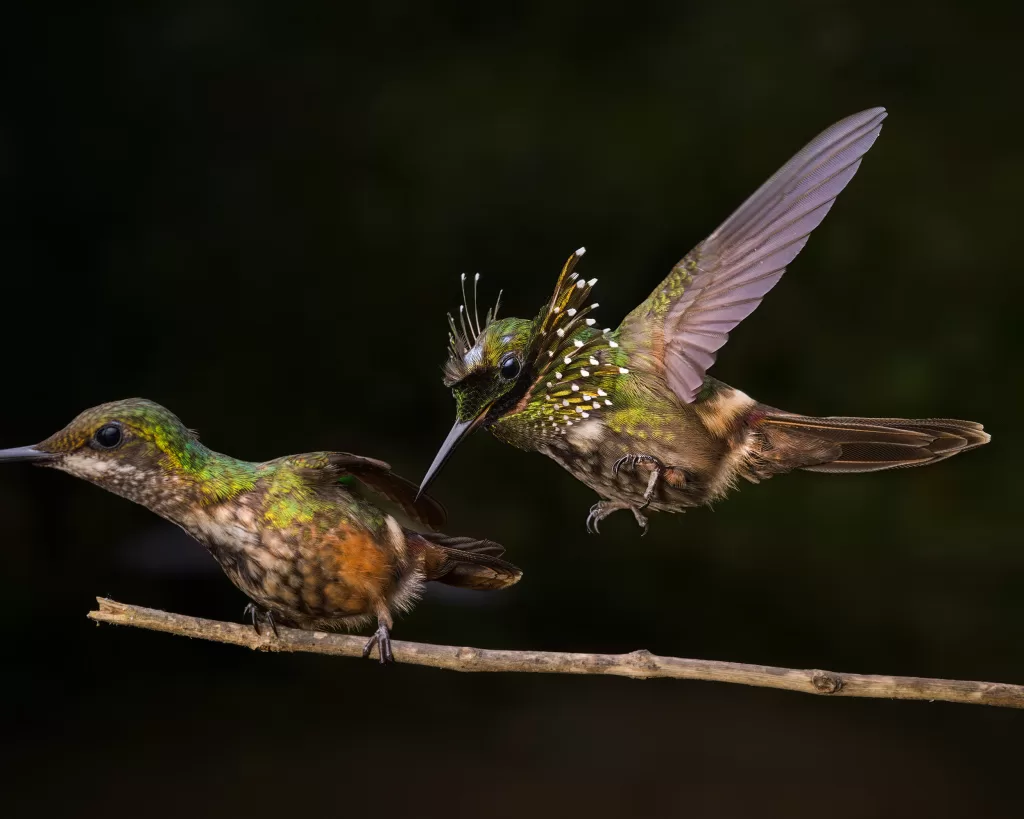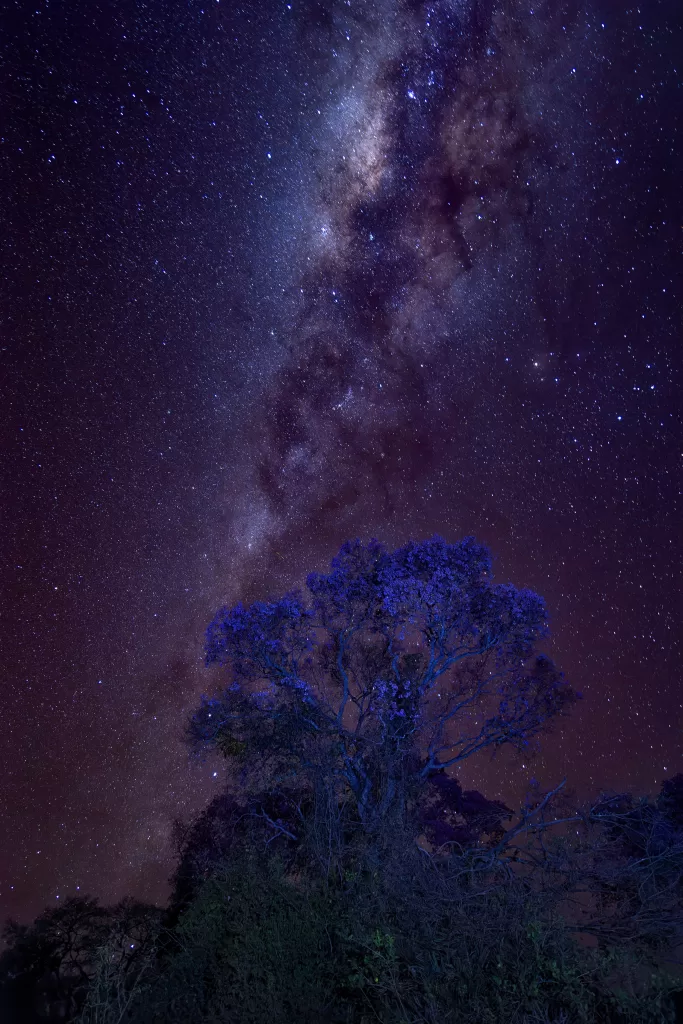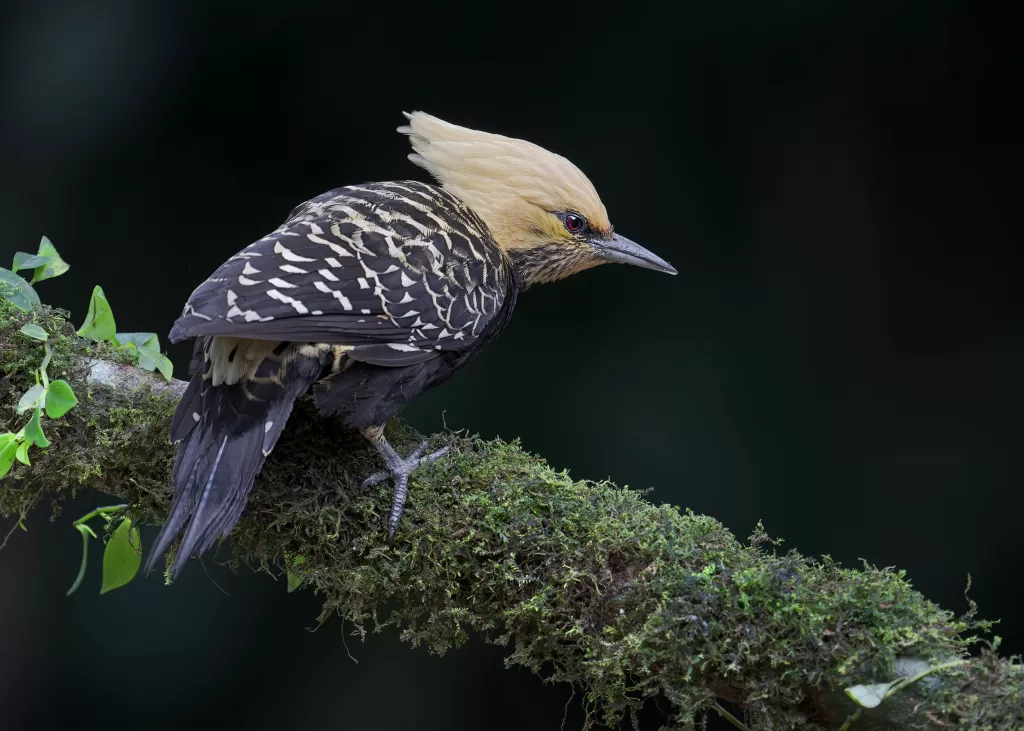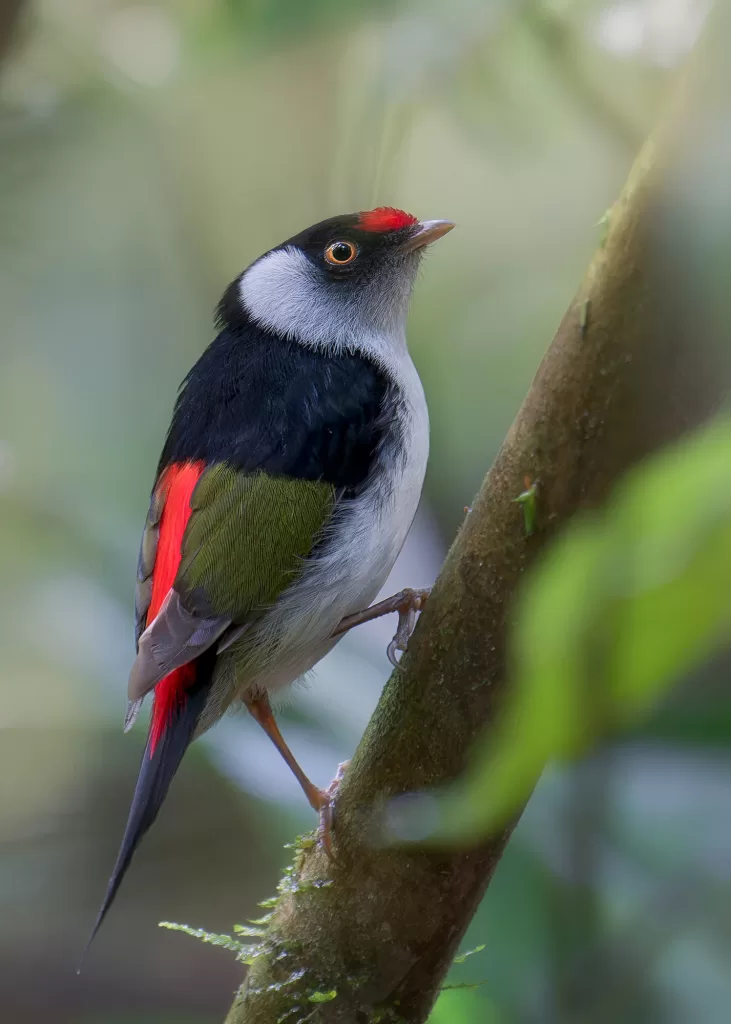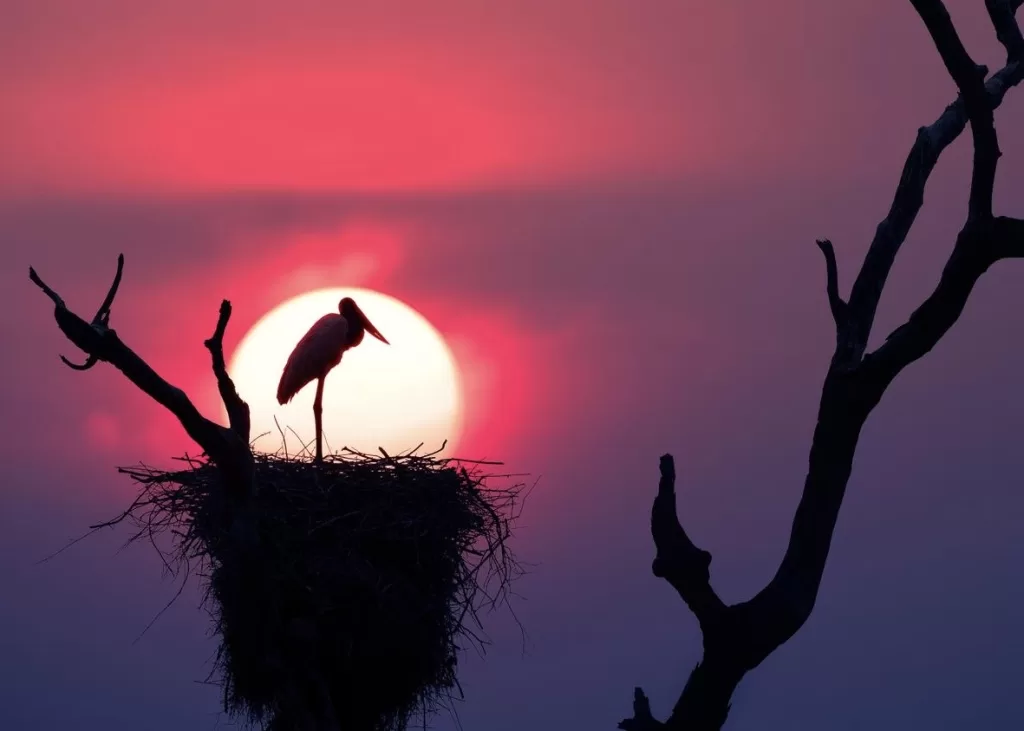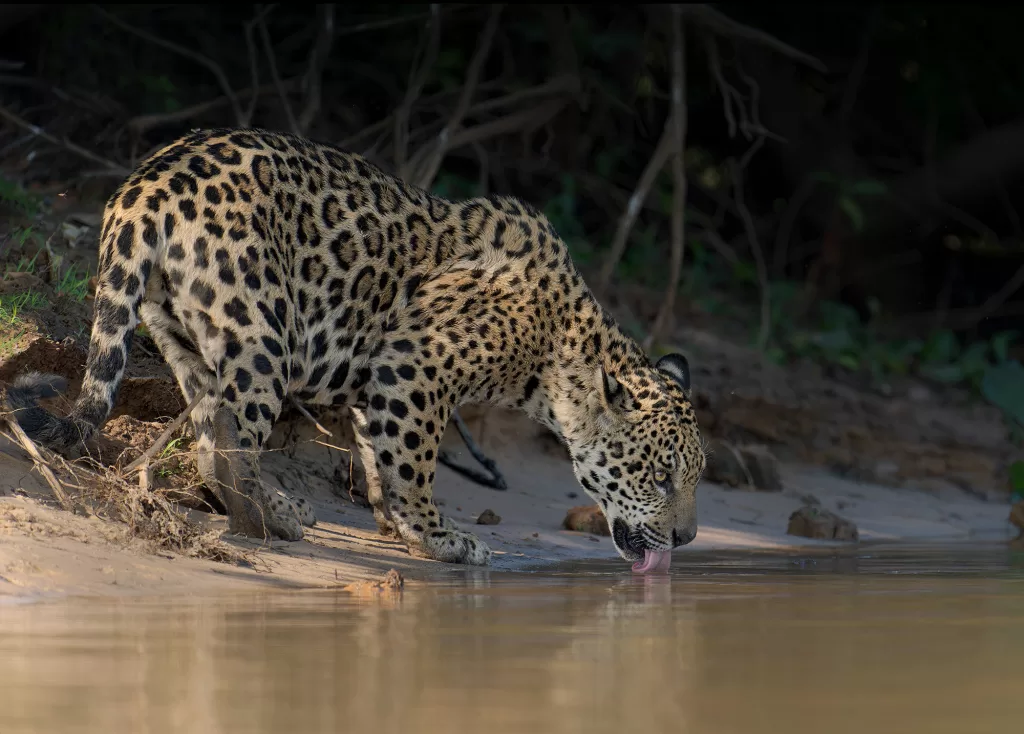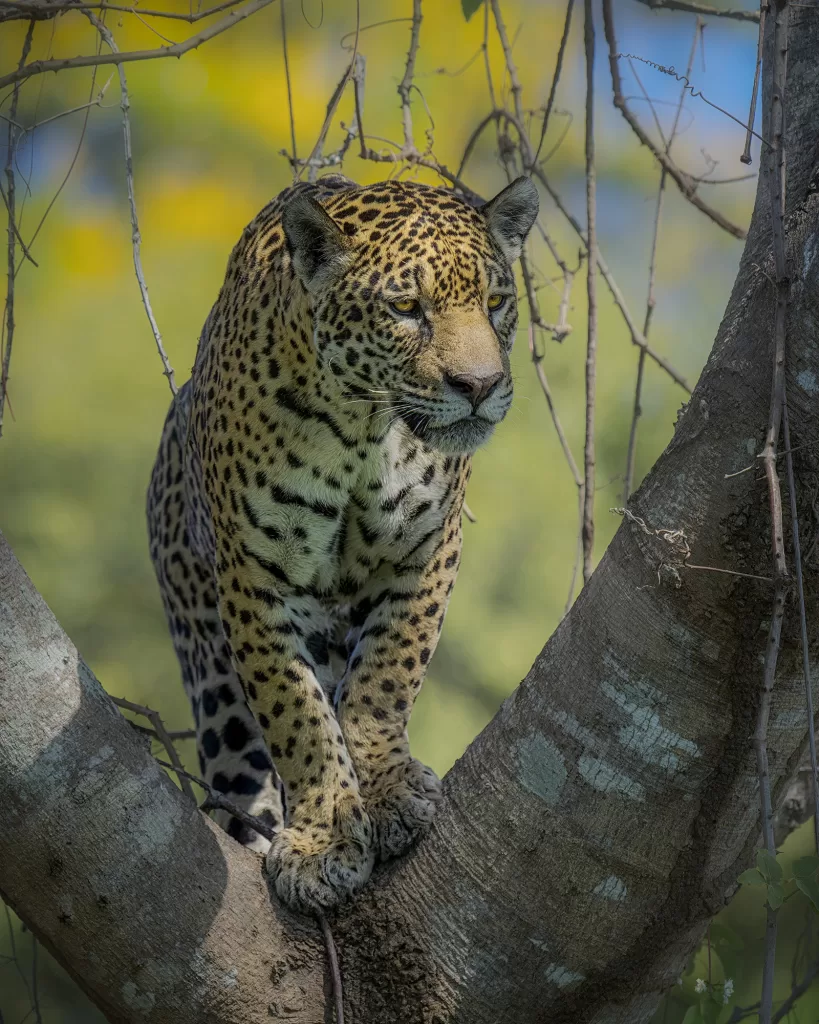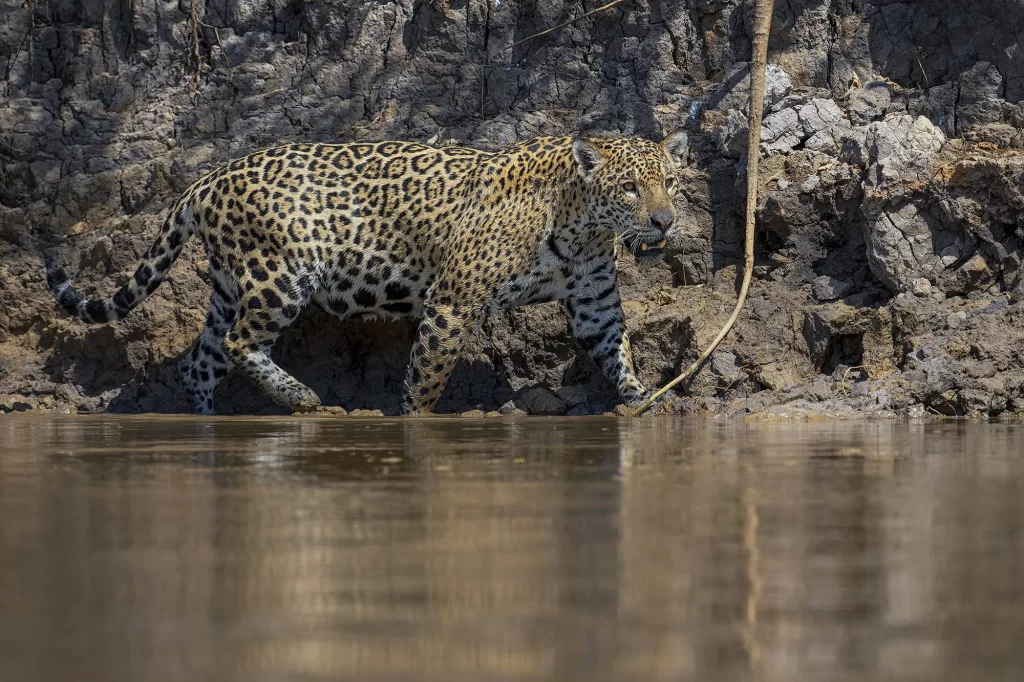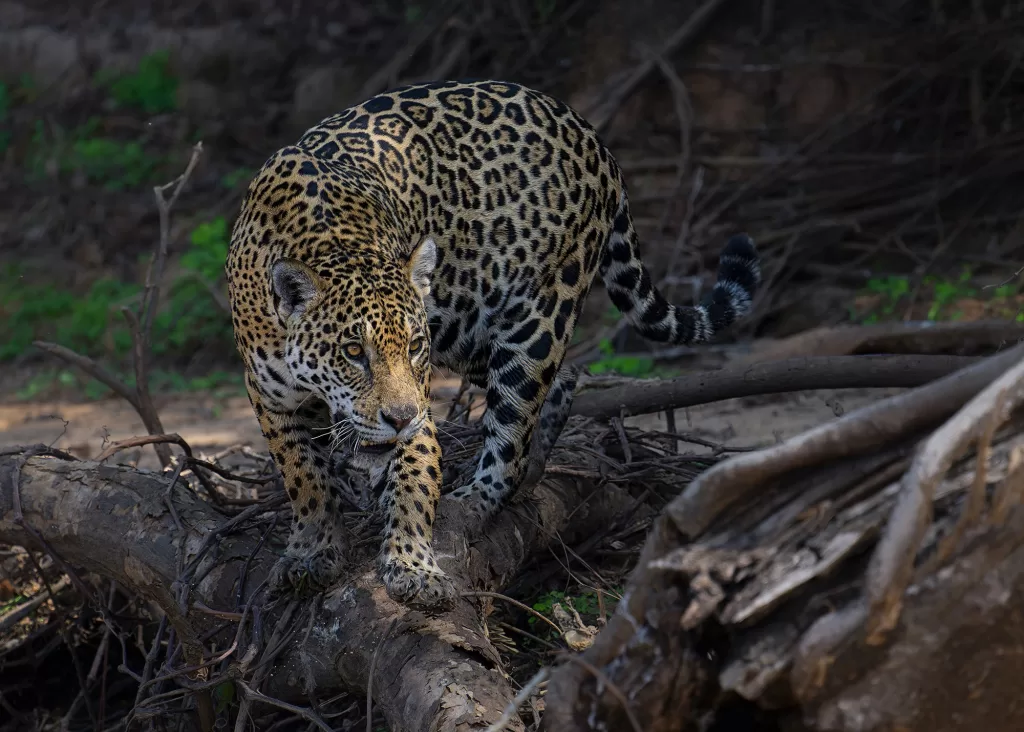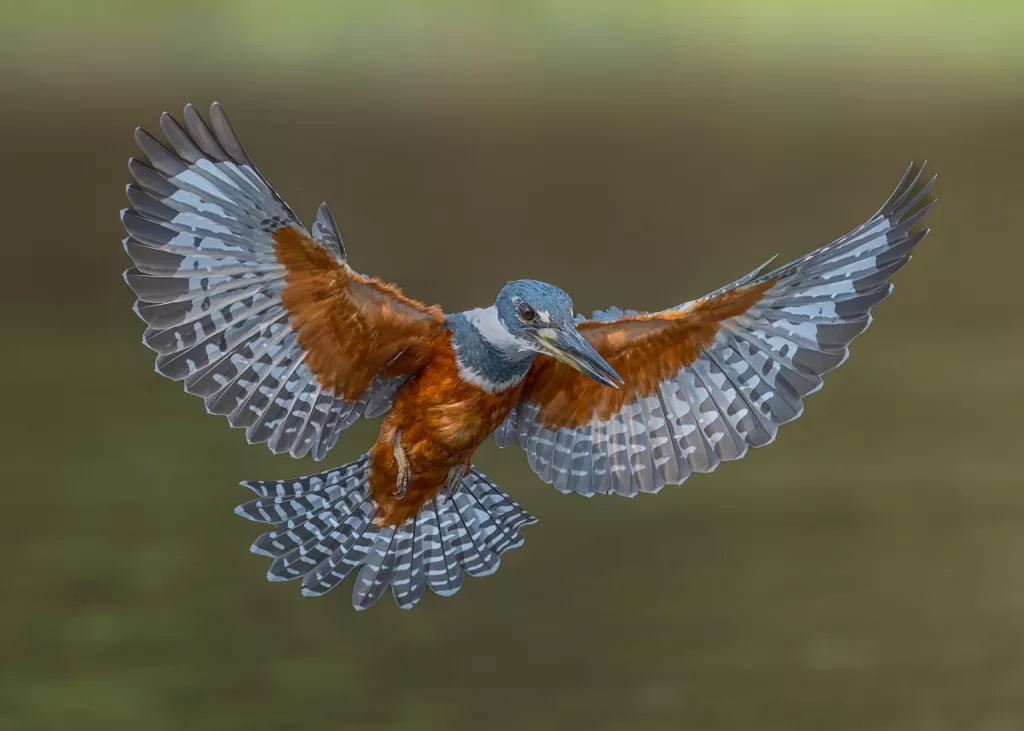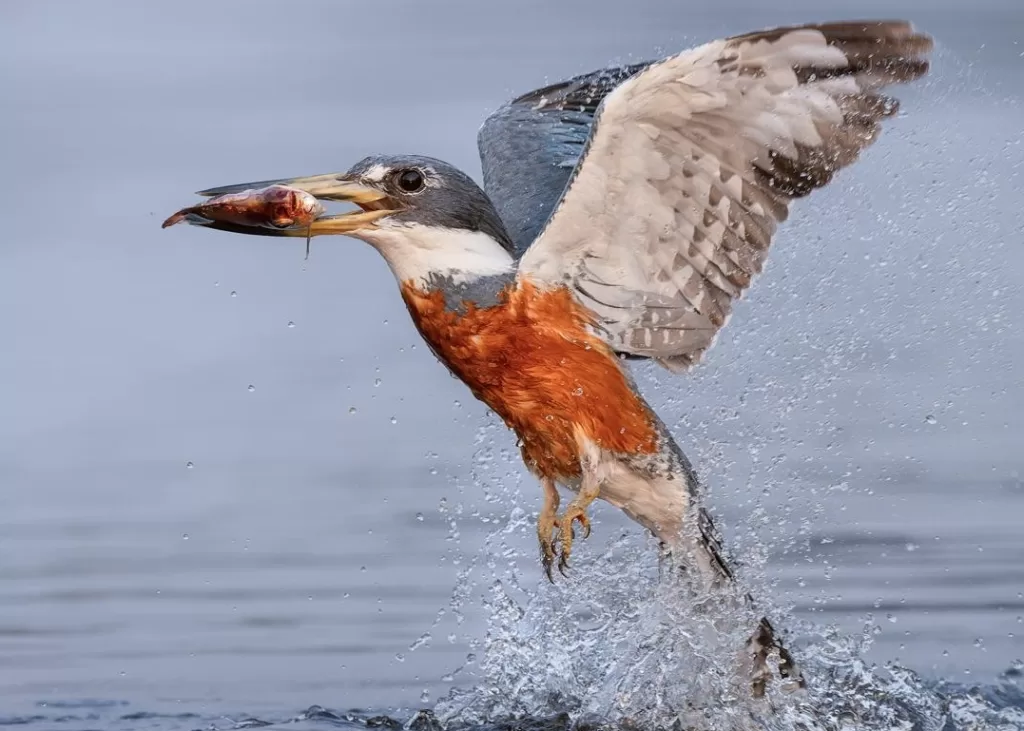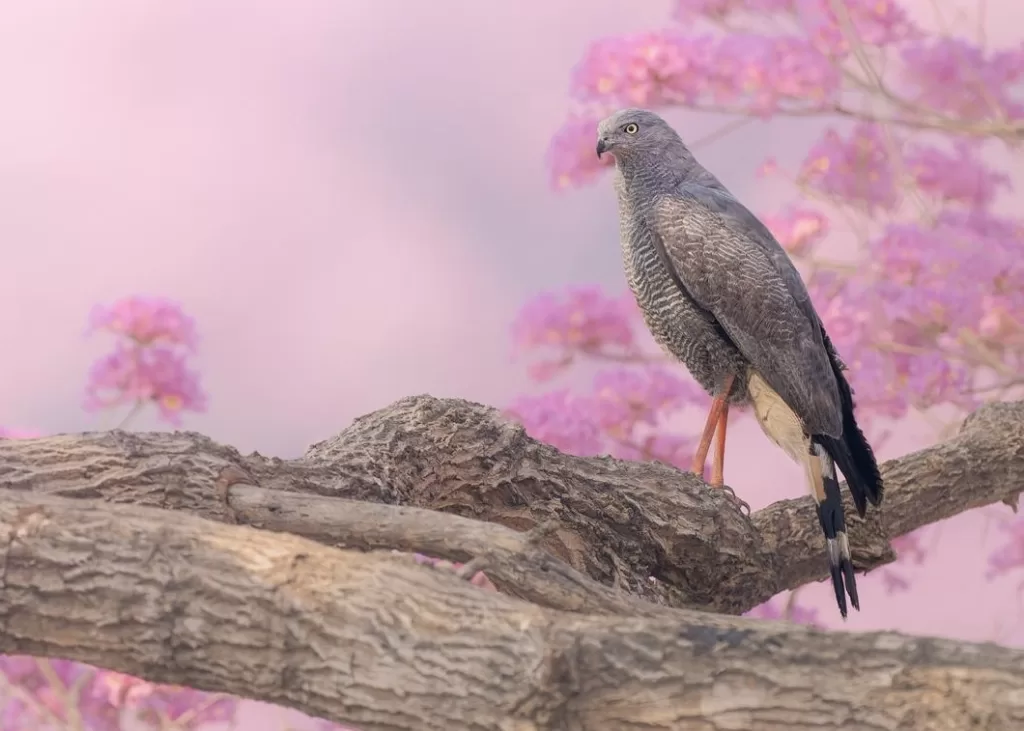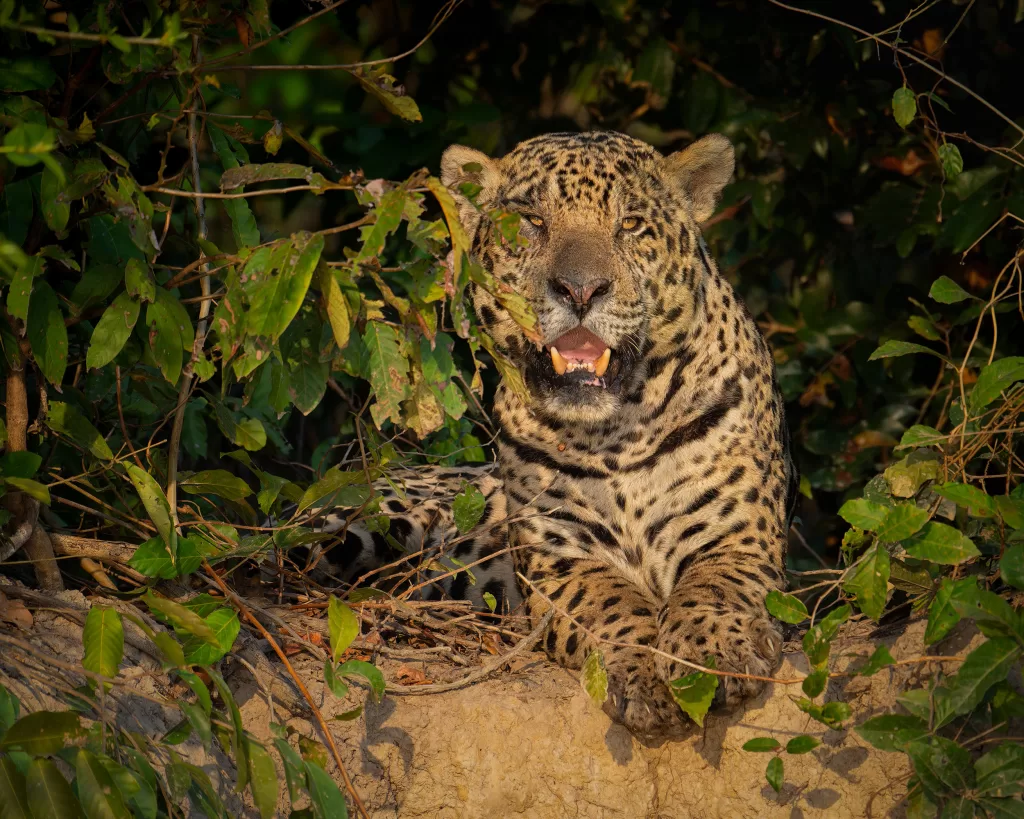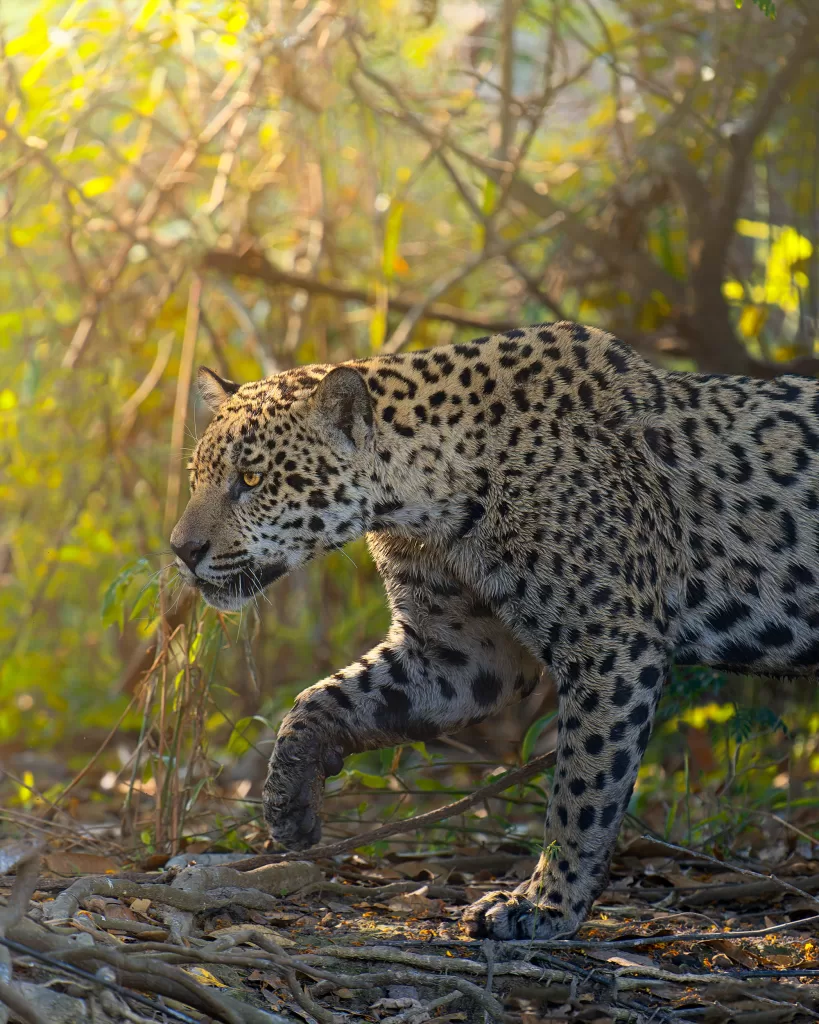Pantanal Photo Tour
Scroll down
About the Tour
June to October in Pantanal – Brazil is the perfect time to embark on a quest to spot jaguars in the Pantanal, the world’s largest wetland. During the dry season, water levels drop, concentrating wildlife along riverbanks and significantly increasing the chances of encountering the Americas’ largest cat, the jaguar, in its natural habitat.
This period not only offers more frequent encounters with this iconic species but also showcases an impressive diversity of birds, caimans, and capybaras. It’s an ideal time for photography and nature enthusiasts, as the clear skies and golden light of dawn and dusk enhance the landscape’s beauty and create unforgettable photographic opportunities.
Date
July 14th - 23th, 2026
Activity level
Easy
Available spaces
6
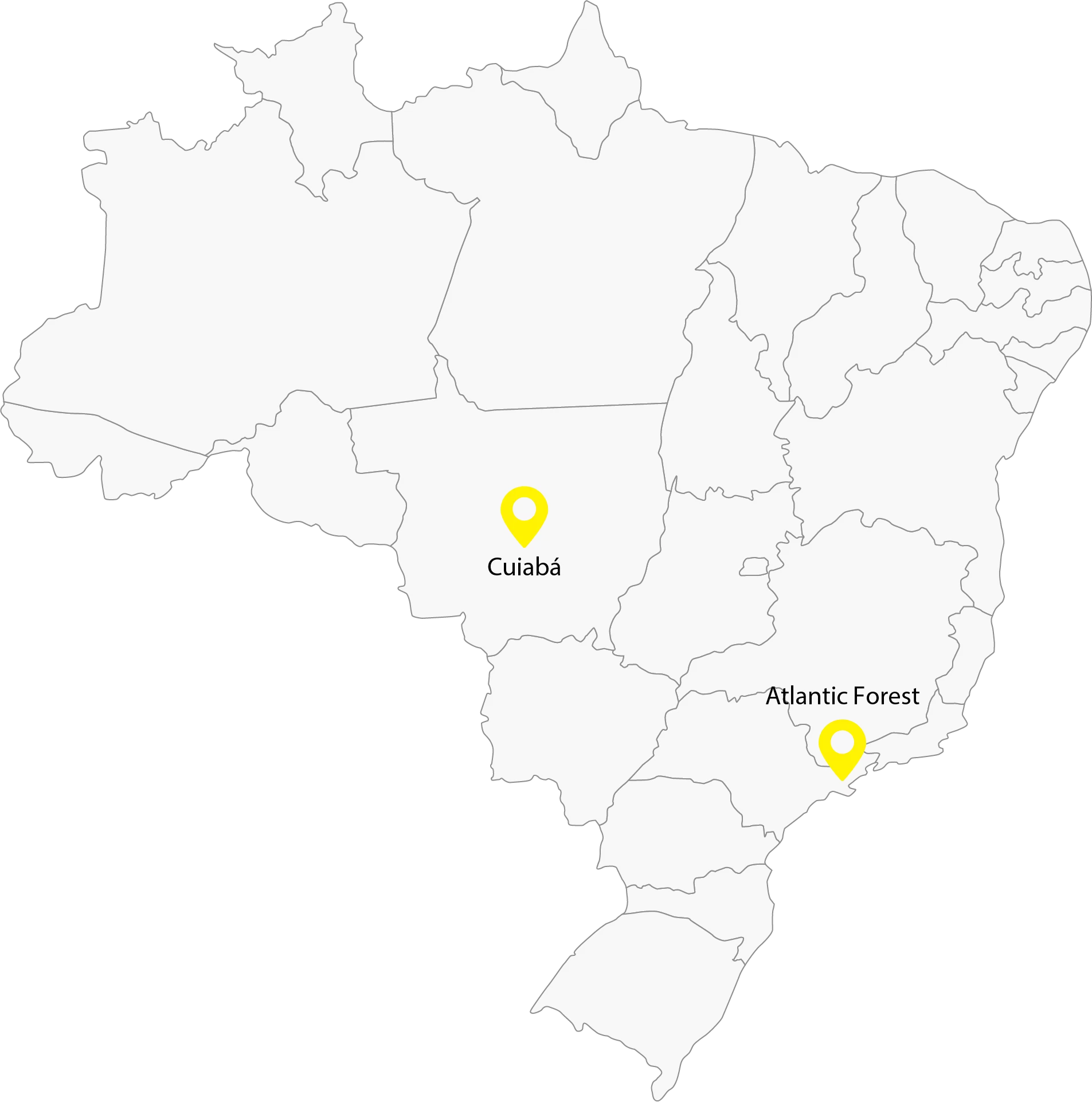
Itinerary
Day 1 | July 14: Welcome in Cuiabá
- Airport Reception: Our team will meet you at the arrival area of Marechal Rondon International Airport in Cuiabá. A representative will provide a warm welcome and coordinate your transfer to the hotel.
- Hotel Transfer: Once all participants are gathered, we’ll head to your accommodation in Cuiabá, where you can settle in, rest, and get acquainted with your surroundings.
- Welcome Dinner: In the evening, we’ll share a special welcome dinner—an excellent opportunity for all participants to meet. During this gathering, your guide will present the itinerary details and explain what to expect in the coming days of the expedition. This is the perfect time to address any questions and prepare for the adventure ahead.
Day 2 | July 15: Departure from Cuiabá to the Pantanal
- Journey Cuiabá – Poconé (100 km): The day starts with a drive along a paved road from Cuiabá to Poconé, the gateway to the Pantanal.
- Journey Poconé – Porto Jofre (150 km): From Poconé, we’ll continue along the famous Transpantaneira Road, a dirt path known for its incredible biodiversity. Along the way, we’ll make strategic stops to observe and photograph local wildlife, including caimans, capybaras, and exotic birds.
- Estimated Arrival Time: Around midday, we’ll arrive at our accommodation in Porto Jofre and enjoy lunch before embarking on our first expedition.
- Boat Expedition (2:00 PM): In the afternoon, we’ll set out on a boat to explore the Cuiabá River and its surroundings in search of jaguars and other wildlife. We’ll spend approximately three hours on the river, observing animals in their natural habitat.
- Return to the Lodge (5:30 PM): At the end of the activity, we’ll return to the lodge to rest and prepare for the next day’s adventure.
Day 3, 4, 5, 6 y 7 | July 16 -20: Jaguars and River Expeditions
Each day begins with an early boat trip to explore the Cuiabá River and its tributaries—one of the best locations to observe jaguars in their natural habitat. These magnificent cats are most active during the early hours, and with some luck, we may see them hunting caimans or capybaras, resting on the riverbanks, or even swimming.
Throughout the journey, we’ll also encounter other fascinating species, such as giant otters, capybaras, and a wide variety of birds.
- Midday: Lunch will be served on the boat as we continue searching for local wildlife.
- Afternoon: We’ll head back to the river in the softer sunlight of the late afternoon, creating ideal conditions for photography and wildlife observation. During these hours, jaguars and other animals become active again, and with our expert guides’ deep regional knowledge, we’ll navigate the best spots to maximize sightings.
- End of the Day (5:30 PM): We’ll return to the lodge to relax, have dinner, share the day’s experiences, and recharge for the next day.
Day 8 | July 21: Safari at Piuval
- Breakfast and Check-Out: We’ll start the day with an early breakfast, followed by check-out from the lodge.
- Transfer to Piuval: Enjoy a scenic journey through the Pantanal as we head to Piuval Lodge, arriving in time for lunch.
- Afternoon Safari: We’ll embark on a safari in the area, searching for giant anteaters and other fascinating species, including birds, hawks, caimans, and mammals. After the expedition, we’ll return to the lodge for dinner and to share the day’s experiences.
Day 9 | July 22: From Piuval to Cuiabá
- Morning Safari (5:00 AM): Begin the day with a vehicle safari around Piuval, searching for giant anteaters and other local wildlife.
- Breakfast: After the safari, we’ll return to the lodge for breakfast.
- Second Safari: Following breakfast, we’ll head out for another vehicle safari to further explore the area and observe more animals.
- Lunch and Check-Out: Return to the lodge for lunch before checking out. We’ll then transfer back to Cuiabá, where we’ll spend the night before flying to São Paulo the following day to continue our respective journeys.
Day 10 | July 23: Return Flight
Nine fascinating and fun-filled days captured in photographs and unforgettable moments, memories of our visit to a place where biodiversity knows no bounds.
It’s time to say “see you soon,” as we look forward to sharing a new adventure together.
After a comfortable rest and a delicious breakfast, we’re ready to head home.
Please confirm your flight schedules.
Extension option:
A representative from our team will greet you at São Paulo-Guarulhos International Airport.
Arrival in São Paulo and transfer to your accommodation.
Afternoon free to rest and prepare for the adventure ahead.
Extension: Day 11 | July 24: Transfer to Duko Birdwatching
Morning:
Breakfast in São Paulo.
Transfer:
4-hour drive to Duko Birdwatching.
Arrival:
Lunch at Duko Birdwatching.
Afternoon:
Hummingbird and local bird photography session.
Target species:
- Red-necked Tanager
- Green-headed Tanager
- Blue Dacnis
- Rufous-capped Motmot
- Festive Coquette
- Saw-billed Hermit
- Pin-tailed Manakin
- Golden-chevroned Tanager, and more.
Extension: Day 12 | July 25: Full Day at Duko and Surrounding Trails
Morning:
Photography session focused on hummingbirds.
Target species:
- Festive Coquette
- Saw-billed Hermit
- Violet-capped Woodnymph
- Versicolored Emerald
- Glittering-throated Emerald
- Spot white-bearded manakins in the area.
Afternoon:
Excursion to the Devil’s Cave.
Target species:
- Spot-billed Toucanet
- Pin-tailed Manakin
- Swallow-tailed Manakin
Return to Duko for additional photography opportunities.
Extension: Day 13 | July 26: Transfer to Trilha dos Tucanos
Morning:
Early breakfast.
3.5-hour transfer to Trilha dos Tucanos, a site nestled in the Atlantic Forest, known for its feeders brimming with thrushes, tanagers, toucans, and hummingbirds.
Afternoon:
Photography session of local species.
Target species:
- Saffron Toucanet
- Green-headed Tanager
- Olive-green Tanager
- Red-breasted Toucanet
- Spot-billed Toucanet
- Plain Parakeet
- Black-throated Grosbeak
Optional night activity:
Nocturnal observation at the feeders, which attract tapirs, crab-eating raccoons, and South American coatis.
Extension: Day 14 | July 27: Return to São Paulo
Morning:
Early breakfast.
Morning photography session.
Target species:
- Magpie Tanager
- Blond-crested Woodpecker
- Yellow-fronted Woodpecker
- Azure Jay
- Crimson-crested Woodpecker
Afternoon:
After lunch, a 4-hour transfer to our hotel in São Paulo.
Extension: Day 15 | July 28: Return Home
Fourteen fascinating and enjoyable days captured in photographs and unforgettable memories of our visit to a place where biodiversity knows no bounds.
Time to say “see you soon,” as we look forward to sharing another adventure together.
After a comfortable rest and a delicious breakfast, we are ready to head back home.
Please verify your flight times.
Featured sightings
USD 5,250
Included
- Double accommodation to share
- Meals
- Transportation from Cuiabá to Ciuaba
- Water
- Safari vehicle (Piuval)
- Boat (Porto Jofre)
- Expert photography guide
- Local guide
- Single room supplement: +USD 800
- Extension + USD: 2600. Request this information
Not included
- International and domestic flights and airport taxes
- Souvenirs
- Tours not mentioned above
- Dinner night 1
- Additional nights
- Alcoholic beverages, snacks, and drinks not included with meals
- Laundry service
- Personal expenses
- Travel insurance (highly recommended)
- Tips
- Any other services not specified in this document
General tips
To have a better experience, it is important to consider some key factors that will make your stay in Brazil more comfortable:
- If you enjoy bringing souvenirs back home, we recommend bringing extra money to shop in the various localities we will visit (the local currency is the Brazilian Real). We suggest exchanging around 1,500 BRL (approximately equivalent to USD 300) at the airport. For any other expenses, we recommend using credit cards.
- Insect repellent or anti-mosquito spray
- Sunscreen
- Long-sleeved clothing and a buff to protect yourself from the sun
- Hat or cap
- Flashlight (preferably head-mounted)
- Fabric bag for wet clothes
- Water bottle
- Trekking shoes
Photographic equipment
As photographers, we know how challenging it can be to decide how much gear to bring, as we always want to pack everything to make the most of the experience. Below are our recommendations for the type of equipment to bring:
- Wide-angle lens
- Zoom lens, 200-600mm range
- Rain cover for your equipment
- Tripod
- Flashes, if you enjoy night photography
- Extra batteries and memory cards
- Battery charger
- Cleaning kit
- Plug adapter if using international chargers
Clothing
In August, the Pantanal remains in its dry season, with hot days and relatively cool nights. Wear light, breathable clothing during the day, such as long-sleeved shirts and pants, to protect yourself from the sun and insects. A hat, sunglasses, and trekking boots are essential.
For the cooler mornings and evenings, bring a light jacket or sweater. A lightweight raincoat is also helpful for unexpected weather changes. Opt for neutral-colored clothing to avoid disturbing wildlife and dress in layers to easily adapt to temperature changes.
tour leader
He graduated in advertising career at the San Francisco de Quito University.
He worked on his career until 2017, since then he made the decision to live from his passion, nature photography. In the same year he started his own business, Photo Wildlife Tours, in which it is dedicated to wildlife photography tours, and conservation. In addition to other audiovisual projects.
In the year 2022 he became the first Ecuadorian to win a category of Wildlife Photographer of the Year, “Animals in their environment”.
Do you need more information?
- 593 98 904 9567
- [email protected]
- Quito - Ecuador
